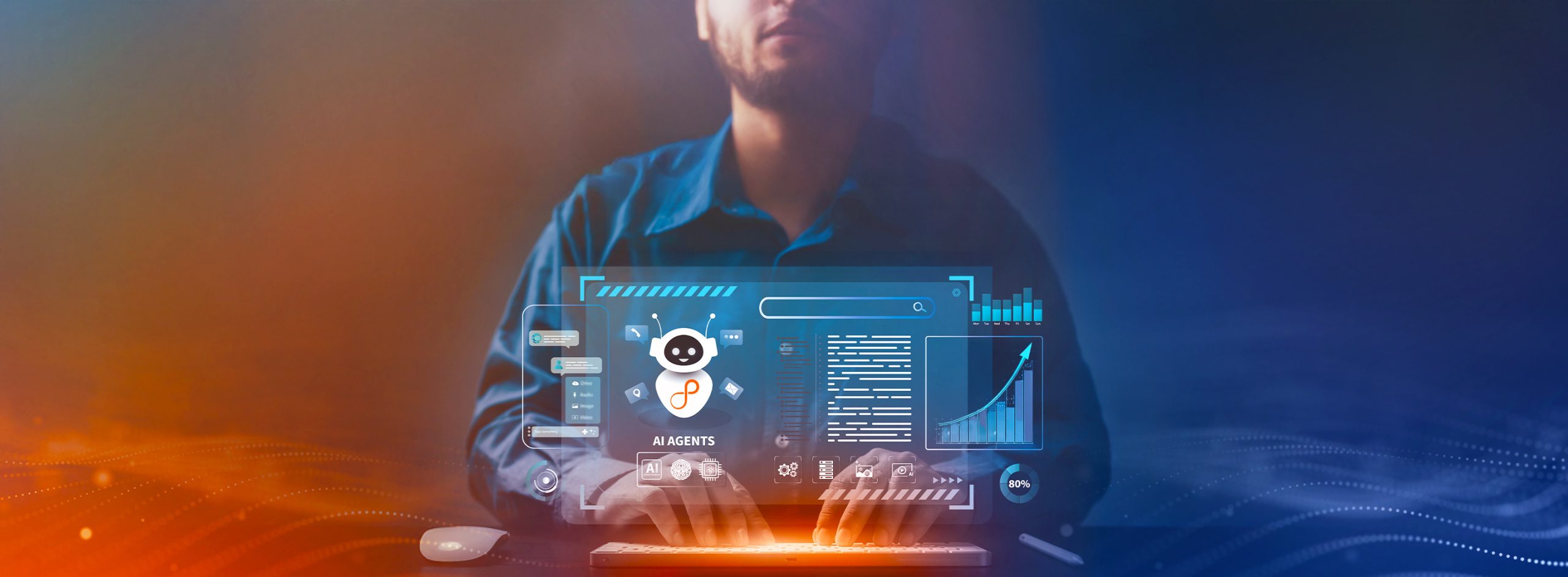2016 will see a significant increase in the volume, velocity, and variety of enterprises creating and executing on their digital strategies. This change will only serve to accelerate the shift of business spending from IT Modernization to Digital Transformation. At Persistent Systems, we see eight digital technology trends as game-changers for software-driven enterprises in 2016 and beyond. The trends fall into three major categories.
- The first two trends (Mobile User Experience and Internet of Things) pertain to the interactions among the enterprise, people, and devices.
- The next three trends (Adaptive Security and Data Governance, Data Lakes, and Interactive Analytics at Scale) relate to the lifeblood of today’s software-driven business – data, along with the analytics performed on this data to obtain insights and drive business actions.
- The final three trends (Machine Intelligence, Blockchain, and Containers) describe enabling technologies that are broadly applicable to various aspects of digital transformation across different industries.
In the meantime, we’ll summarize the eight in three easy-to-consume blogs. When we came up with these trends, I couldn’t help but hear them in the voice of Count von Count from Sesame Street; now that you see his picture above, I hope you’ll hear it too! As always, we hope this is just the start of a conversation.
Trend 1: Mobile User Experience
User experience (often abbreviated as UX) is the centerpiece of digital transformation. You must “wow” your users almost immediately to engage them, or you risk losing them. In 2016, we will see a significant focus on user experience as a business strategy, not only to grow top-line revenue but also to create stickier, long-term user engagement. It is also clear that much of the user experience innovation in 2016 will be mobile-centric.
One of the biggest changes we predict in 2016 is that the app interface itself will fade into the background to make the experience more contextual, intuitive, and action-oriented. Siri and Google Now are the most well-known exemplars of this trend, and in 2016 more enterprise apps will emulate them – popping open just at the right moment with the right information, while otherwise remaining in the background. Reducing the friction for the user, from having to actually open the app to use it, is no small advantage. Learning the habits and preferences of the user to customize the experience and app triggers will be the new normal. Both iOS and Android notification centers have made significant changes in recent years, opening the opportunity for a richer app interaction within the notification itself.
As recording artist Alicia Keys puts it, “Simplicity makes me happy.” Simple and intuitive interfaces will dominate in 2016, with designers opting to only keep the frequently-used actions directly available on an app screen while hiding everything else. This also means the polarizing “hamburger menu” which hides all the other options is not going away anytime soon.
Users will also expect a seamless experience of the service on multiple devices and touchpoints as they use a single service across smartphones, desktops, tablets, and wearables. Maintaining consistent state, interface, and capabilities across multiple devices will be the new normal.
We will also witness a significant increase in the offerings and maturity of cross-platform development and testing platforms to move cross-platform apps closer to native apps in delivering a smooth and responsive experience. Cross-device testing, usability testing, and cloud-hosted in-app analytics will make application experience consistent across the growing spaghetti of devices and platform versions.
Inter-app communication, both data and control, will mature in 2016 to make it easier for apps to communicate securely. Users won’t face jarring app switches when carrying out a foreign app action from within their current app, but will instead be able to complete multi-step transactions of the foreign app from within the currently open app.
Trend 2: Internet of Things (IoT)
Predictions for the number of smart devices (or “things”) that will be online in 2016 are in the billions, with continuing growth forecast for the foreseeable future. The scale and diversity of IoT endpoints has been growing rapidly over the last couple of years, ranging from smart wearables, to environmental beacons and sensors, to smart gadgets and drones, to appliances, buildings, and cars that interact with their users. The greatest growth has been in the consumer segment, with wearables and home automation dominating. Outside the consumer segment, the growth has been strongest in the industrial segment and assembly lines. In 2016, we will see a strong growth of IoT devices in commerce, transportation, infrastructure, and enterprise. From shopping malls to roads to office buildings, these devices will power the ambient user experience helping deliver the just-in-time contextual action, insight, or information to the user. We will also see growth in deployment of systems that not only sense the world around them but react autonomously. Examples include entire buildings that optimize energy consumption and monitor air quality, self-driving vehicles, and traffic light systems that react not just individually based on proximal sensors but collectively based on a network of those to regulate traffic. In the consumer space, we will see more interoperability within devices and platforms that will allow the lightbulb from one manufacturer to respond to inputs from the thermostat/motion sensor of another via a platform built by a third.
IoT security received some attention in 2015, with the odd appliance hack demo and the more famous smart Jeep disablement incidents. In 2016, however, IoT will play in the hacking majors, with at least one major security incident that will be real (not a controlled experiment) and with severe consequences. This may be the impetus needed for the industry to finally think security by design in this space. From end-to-end encryption to secure local storage to over-the-air patches, we will see security baked into the IoT pipeline.
While smart device and sensor manufacturers will benefit from the IoT boom, the true business value of IoT lies in the analysis of the data generated and gathered by these devices and the business actions that can be taken. It is an open opportunity for both manufacturers and platform players to seize. Intelligent systems – ones that learn from user behavior, environmental data gathered from their sensors, and inputs received from other devices around them – will be the biggest winners.
You may also want to read the following earlier posts from our team on the subject of IoT:
- The Internet of Things: When the Whole is Greater than the Sum of the Parts
- An End-to-End IoT Platform: The Parts that Make the Whole, Whole!
- A Messaging-Based Architecture for IoT: Beautiful Music from Many Voices
- The Brain of an IoT System: Analytics Engines and Databases
- Security Considerations for the End-to-End IoT Platform
Link: LinkedIn
Continue on to the next post here.
Dr. Siddhartha Chatterjee is Chief Technology Officer at Persistent Systems. Other contributors to this series include the following members of the CTO office: Chandraprakash Jain (Senior Architect), Chandrakant Shinde (Senior Architect), Dhruva Ray (Principal Architect), and Dr. Pandurang Kamat (Chief Architect).






